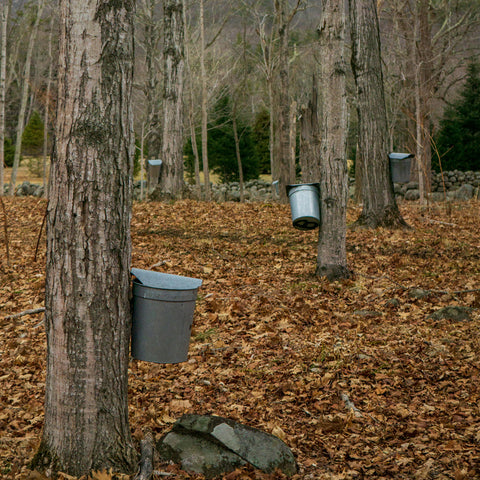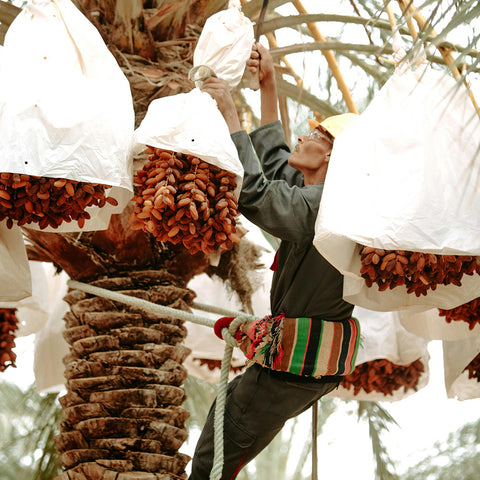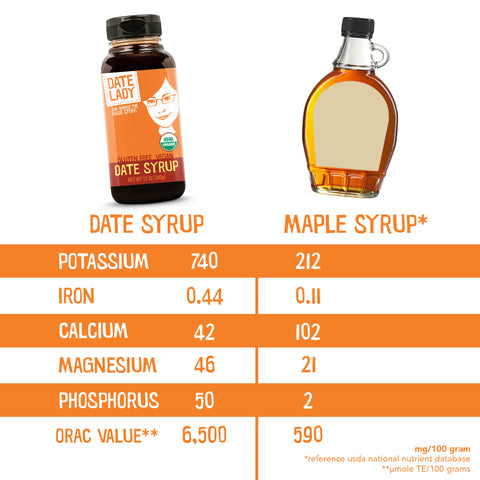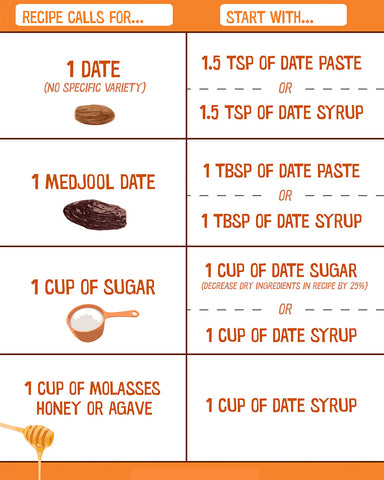
Ready to add a dash of natural sweetness to your life? Date syrup and maple syrup are two popular options in the world of alternative sweeteners. But how do they compare? Both are great options, but is there one that works better for you? Let's talk about it.
The Story Behind the Sweetness: Origins and Production Processes
Let's kick things off with a bit of history. Maple syrup's roots trace back to North American Indigenous peoples, who discovered the liquid gold flowing from maple trees (1). Date syrup, on the other hand, has its origins in the Middle East and North Africa, where sweet dates have been popular for thousands of years. From tapping trees to blending dates, these sweet elixirs have stories to tell.
Art of Turning Sap into Maple Syrup
Maple syrup production begins with the tapping of maple trees. Small holes are drilled into the trunk, allowing the sap to flow into collection containers. The sap is then boiled in large evaporators to remove most of the water content, leaving behind the concentrated syrup. This process requires careful monitoring of temperature and evaporation levels to achieve the desired consistency and sweetness.

From Date Palm to Sweet Delight: The Making of Date Syrup
Date syrup, on the other hand, has no real juice coming from the dates to concentrate. In Middle Eastern markets, it is common to see dates for sale, and often bagged together tightly, and when they get hot from the desert heat, you can see in the corners of the bags that the whole dates themselves are naturally turning into nectar, or syrup, rather than a juice coming out and separating itself from the fruit.
To produce date syrup efficiently on a larger scale and in an uncontaminated manner, the process goes a bit differently. Because they contain very little to no water activity or juice from the get-go, you actually have to add in water to strain the nectar from the dates. Essentially date syrup is made by heating dates in water, blending the dates, pressing the mixture through a filter to strain out pits and insoluble parts of the date, and then evaporating the water that was put in, and back out. What you are left with is the nectar, which contains vitamins and minerals from the date.
To learn more about making your own date syrup, click here.

Nutritional Comparison
Let's talk nutrients. Check out these stats!

Baking Substitutions and Natural Sweetening
Breakfast, desserts, or savory delights—these syrups are your kitchen BFFs. Picture drizzling date syrup over pancakes or maple syrup over oatmeal—pure bliss. Baking? Oh, they've got you covered. You can substitute white sugar for either in most baking recipes. It's all about versatility.
If you're looking for healthier alternatives in baking, both date syrup and maple syrup can serve as excellent substitutes for refined sugar or other sweeteners. Date syrup can be used as a 1:1 substitution for maple syrup, offering a deeper, caramel-like flavor to your recipes. These substitutions not only enhance the taste of your baked goods but also provide additional nutritional benefits. Click here for more info about substituting dates in your recipes!

Final Thoughts: Your Sweet Journey, Your Rules
So, date syrup or maple syrup? The choice is yours, and both are winners in the natural sweetener game. Whether you're drawn to date syrup's rich complexity or maple syrup's classic sweetness, you're making a decision that aligns with your taste buds and health-conscious lifestyle.
Embark on your sweet journey with confidence, and let date syrup and maple syrup be your culinary companions. Here's to healthy, happy cooking!
Can't choose? We combined the best of both worlds to make Smoked Maple Date Syrup, perfect for glazing meats and veggies, adding to your coffee or drizzling on vanilla bean ice cream.
Source
(1) https://www.americanindianmagazine.org/Indigenous-origins-of-maple-syrup


